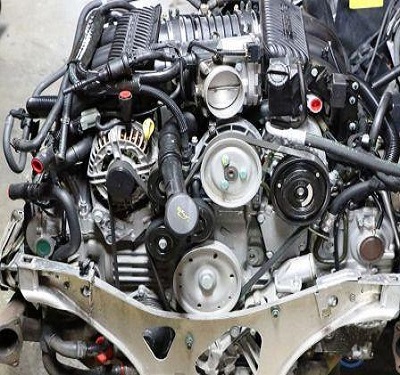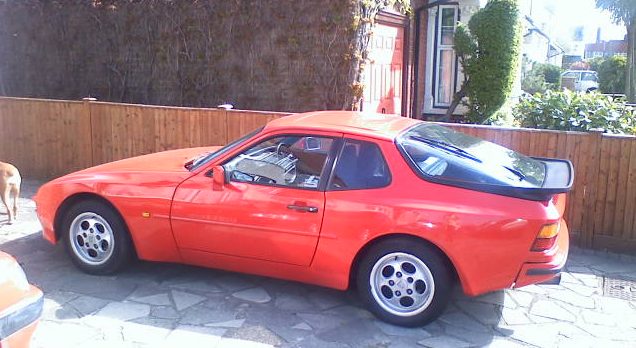3 Reasons not to Buy a Used Porsche
Not everyone can afford to buy a new Porsche. In fact, there are not many that can afford to buy a used one either. Nevertheless, owning one of these beautifully styled German automobiles remains a dream of many. I might go as far to say this automobile appeals to any human with a pulse.
But what happens if you decide to stretch your budget and pick up a gently used Porsche with low miles and a solid maintenance history. Here we’re going to tell you exactly what can happen and offer three sobering reasons not to buy a used Porsche. If you still want one, use this used car checklist worksheet when inspecting the vehicle.
Porsche Cayenne and Panamera Problems
If you’re a dreamer with a family jumping behind the wheel of a used Porsche Cayenne or Panamera seems like a logical compromise. You get room for the entire family and the legendary performance expected from any vehicle rolling off the Leipzig, Germany production line.
I’m not here to smash your dreams of owning one of these family size sports cars, but instead I want to steer you clear of a good portion of them. The V-8 engines built in the Leipzig assembly plant for the 2009 through 2012 model years have a serious design flaw.
This motor uses a variable valve timing system that provides amazing power on demand while still delivering admirable fuel economy and low engine emissions. It pulls off this amazing feat with a high-speed onboard computer that adjusts the timing on the fly. Review the engine section in your Porsche Cayenne and Panamera V-8 auto repair manual for more details on how the system operates.
Although this technology works flawlessly they built a mechanical weakness into this system. The cam gears attach to the timing actuators with aluminum bolts. Aluminum in general is something the German automaker has been using a lot more of to cut vehicle weight. This weight reduction increases performance and fuel economy at the same time.
Unfortunately, the soft metal bolt is known to separate, dropping the head of the bolt inside the engine. However the hunk of metal falling inside is not the main problem. When the bolt breaks it allows the timing chain to slack. Without the proper tension on the chain that links the camshafts with the crankshaft the timing jumps.
The tight tolerances on this V-8 motor require precise timing at all times. When the engine jumps time the pistons come up and hit the valves causing catastrophic failure throughout the engine. In most cases it’s not repairable and a replacement engine is required.
Porsche 911 Carrera Engine Problems
The Porsche 911 Carrera is a timeless automobile with amazing style and performance. When you close your eyes and someone says the word Porsche this might be the model you think of first. Therefore, it is one of the most commonly bought and sold used Porsche automobiles of all time. Before you ride off into the sunset in one, let me give you a heads up on a problem that could cause some serious pain in the wallet.

The factories internal designation of the Porsche 911 is the 996. In 2005 they made some styling changes and dubbed this the 997. These cars came with the 300 HP 3.4 L flat six engines. This is also nicknamed the boxer engine as the pistons move from left to right like a boxer throwing punches.
In 1999 the 3.4 L started using a dry lubricated and sealed intermediate shaft bearing. They continued to use this design up until the 2006 model year. The word dry implies that the bearing is not lubricated by the engine oil.
The intermediate shaft has a critical role to play as it connects to both the timing chain and the flywheel. Unfortunately, the intermediate shaft bearing is known for a critical design flaw. The bearing fails as a result of small fluid leaks finding their way into the sealed bearing. When this happens the moisture destroys the dry lubricant and the bearing disintegrates quickly.
In most cases there are no outward symptoms or signs of a problem. If the driver continues operating the vehicle after the bearing fails, it allows slack in the timing chain and then the engine jumps time. This is another Porsche power plant with tight tolerances. Therefore, it self destructs when out of mechanical time. Often the auto repair shop will recommend replacing the motor because the damage is so extensive it’s not worth fixing.
Buying a Porsche with a Manual Shift Transmission
A lot of car enthusiasts prefer to buy a manual transmission sports car. Not only does it make us feel more in control it’s a lot of fun to run up and down through the gears on that desolate back road. The total experience makes us feel more connected to the automobile and the road.
Unfortunately, we’re all probably aware of the weak link in the manual transmission assembly. Yes, I’m talking about the clutch. When you see these beauties on the used car lot they might be there because a clutch service is around the corner. If the previous owner knew how to drive a stick and drove with great skill these cars would still need a clutch about every 30,000 miles.
If you walk up to manual shift Porsche of any year or model and see 30,000 or 60,000 miles on the odometer this is an area you want to have checked. Not only is a clutch job expensive since they have to pull the transmission out, there’s a good chance they’ll find other problems requiring attention when they dig in. A leaking rear main seal is a good example of something they might find.
If the shop see’s a leaking rear main seal they’ll also want to replace the flywheel, pilot bushing and throw out bearing. This can push the parts bill over $2000 depending on what part of the country you’re in. On the labor side of the ticket $1000 is a likely scenario depending on who performs the service. You’ll probably pay a little more at a dealership, but this might be money well spent A reputable dealer will have a certified expert perform the clutch replacement and stand behind the repairs with a 90 day warranty. Regardless, spending three grand two weeks after buying a used Porsche is a tough pill to swallow.


